Every company wants their visitors (i.e. potential customers) and customers to leave their site with a lasting positive memory. Of course, that’s much easier said than done when you consider technical issues, copy confusion, price barriers and the like.
If you want to bring a smile to people’s faces when they hear your company name, you’ll need to understand how memory works and how you can design for it.
Table of contents
How Memory Works
Memory is, perhaps not surprisingly, quite complex. A number of factors influence what we remember and for how long, as Christof Koch of Allen Institute for Brain Science explains…

Christof Koch, Allen Institute for Brain Science:
“Scientists know that many factors play a role in determining what people remember, among them how much attention the person is paying, how novel and interesting the experience is, and the kinds of emotions that are evoked.” (via Scientific American)
One of the most well-known studies on memory was published in 1995 by Donald Redelmeier and Daniel Kahneman. They found that memories are imperfect and highly susceptible to bias by recording the intensity of pain patients undergoing a colonoscopy and a lithotripsy experienced.
Actually, the total amount of pain remembered varied greatly among those studied. Surprisingly, a longer procedure was not remembered as “particularly aversive”. Instead, their judgements of total pain were strongly correlated with the peak intensity and the intensity of the last three minutes.
This is what is now known as the peak-end rule and duration neglect.
If you’ve ever watched a Disney movie, you’re no doubt familiar with the peak-end rule already…
In Thinking, Fast and Slow, Kahneman suggests we have two selves: the experiencing self and the remembering self. The experiencing self lives life continuously while the remembering self lives life in fragments.
During his TED Talk, Kahneman gives an example. If you have a two week vacation and the second week of vacation is just as good as the first, then that two week vacation is better than a one week vacation would’ve been for the experiencing self. For the remembering self, the same is not true because there are no new memories added.
We can conclude, then, that our brains remember a few key moments (e.g. changes, delights) of the experience, not the entire experience.
To better understand this, you’ll need to look at how information is processed to long-term memory…
Memory Encoding
Belle Beth Cooper of Hello Code wrote an article for Buffer, which included a variety of research on memory. In it, she explains the three core stages of the process, the first being encoding…

Belle Beth Cooper, Hello Code:
“Our brain sends signals in a particular pattern associated with the event we’re experiencing and creates connections between our neurons, called synapses.” (via Buffer)
There are three main types of encoding: acoustic, visual, and semantic. It is believed that, in general, short-term memory relies on acoustic encoding (e.g. repeating a phone number out loud over and over again) while long-term memory relies on semantic encoding (e.g. mnemonics).
Memory Storage
The second stage is memory storage…

Belle Beth Cooper, Hello Code:
“If we didn’t do anything further, that memory would fall right out of our heads again. Consolidation is the process of committing it to long-term memory so we can recall it later.
A lot of this process happens while we’re sleeping, as our brains recreate that same pattern of brain activity to strengthen the synapses we created earlier.” (via Buffer)
This includes: where the information gets stored in the brain, how long the memory will last, memory capacity, etc. The way a memory is stored affects the way it is later retrieved. (Have you ever been told that you should study for an exam in a room that resembles the room you’ll be tested in?)
When related information is “chunked” together, memory capacity increases.
Memory Retrieval
Finally, there’s the retrieval and recall stage…

Belle Beth Cooper, Hello Code:
“This is what most of us think of when we talk about memory, or especially memory loss. Recalling the memory is easier if it’s been strengthened over time, and each time we do so, we run through that same pattern of brain activity again, making it a little stronger.” (via Buffer)
Short-term memory, which isn’t overly useful to most companies, is retrieved sequentially. For example, if I asked you to remember a list of 10 words and then to recall the 7th word, you’d need to go through the first six words in your head.
Long-term memory, on the other hand, is retrieved by association (more on this later). For example, if you forget why you walked into a room and you go back to doing whatever it was you were doing prior to entering that room, you will likely remember why you walked into the room in the first place.
How to Create a Lasting Memory
According to Michigan State University College of Osteopathic Medicine…
Two main processes are used to access memories: recognition and recall. Recognition involves comparing a current stimulus (e.g., a sight, sound, or smell) to something sensed in the past; it is a single step process and is generally easier and faster. Recall involves directly accessing information in LTM, and is generally more difficult because there are no direct retrieval cues, thus the entire neural path must often be reconstructed.
So, how can you help facilitate those processes so that your potential customers and customers will more easily recognize and recall your company and their experiences with it?
1. Tap into the visual.
Visual encoding was mentioned briefly above. As Alex Lickerman of ImagineMD explains, it can be incredibly helpful to recognition and recall…

Alex Lickerman, ImagineMD:
“How often do you forget where you left your keys, your sunglasses, or your wallet? The next time you put something down somewhere, pause a moment to notice where you’ve placed it, and then in your mind blow it up.
If you visualize the explosion in enough detail, you won’t forget where you put it. Remember: Memory is predominantly visual.” (via Psychology Today)
Pausing to look at where you left your keys for a few seconds would work just as well. The point is that you take the time to create a visual memory of the location.
Online, this means…
- Consider all of your imagery, especially the imagery around your value proposition.
- Is it telling a cohesive story?
- Is it simple enough?
- Consider all of your copy, especially the copy around your value proposition.
- Is it descriptive enough to create visuals in the person’s mind?
- What images come to mind when reading?
You can answer some of those questions yourself, but a little qualitative research never hurt anyone.
2. Eliminate distractions.
Alex goes on to explain how distractions can interrupt the encoding process, which makes accurate recognition and recall later virtually impossible…

Alex Lickerman, ImagineMD:
“Another reason people often have trouble remembering things is because memory is a function of concentration. Which means when you multi-task you tend to forget more easily.
Have you ever entered a room only to forget why you did so? More likely you’d remember if you weren’t simultaneously planning your dinner for that night and trying to remember the phone number of the person who just left you a message.
This also explains why people who suffer from depression or anxiety have a harder time remembering things: Both conditions interfere substantially with the ability to concentrate.” (via Psychology Today)
We’ve written an entire article on eliminating distractions on your site, which I suggest taking 5 minutes to read before you continue.
However, there are other implications. Consider the person’s environment. If they’re on mobile, they might be on a crowded bus or rushing to their next meeting. If they’re checking at lunch, they might be more or less distracted than if they’re checking at 9 p.m.
There are a great deal of factors you simply cannot control when it comes to memory and the brain in general.
3. Get them involved.
The more involved people are, the more likely they are to remember. For example, in school, did you remember more when the teacher was standing at the front of the class giving a lecture or when you were in groups, learning first-hand?
David Myers explains how the testing effect improves memory…

David Myers, Author and Professor:
“We learn and remember material best when we put it in our own words, when we rehearse it and then retrieve it. And that’s the testing effect.” (via Worth Publisher)
Online, you can replicate this scenario. In your copy, ask questions that readers can answer in their own heads. Whenever you end a sentence with a question-mark, you can bet that most people answered.
Consider how the testing effect might’ve fuelled the BuzzFeed survey craze.
You can also incorporate this into your onboarding flow. Instead of showing new customers exactly what to do, experiment with sending them an email asking them to complete a task. Once they do, repeat.
A concern for some might be that visitors and customers might not be able to answer correctly. David explains why that’s not necessarily a bad thing…

David Myers, Author and Professor:
“Trying and failing to retrieve the answer is actually quite helpful to learning. Those who test their understanding before they read and discover what they don’t know often learn better.” (via Worth Publisher)
Provided you have support visible and available, you can freely experiment with the testing effect.
The more questions you encourage your visitors and customers to answer and the more action you encourage your visitors and customers to take, the better the recognition and recall.
How to Create Memory Associations
Recently, Sticky and CXL Institute released an original study on logos. First, they looked at branding seconds, the percentage of people who see the logo multiplied by the average time they spend on it. Branding seconds is a compound metric that shows how much attention the logo earns, a strong predictor of likability.
Branding seconds increased with the new logo for all of the companies studied (Airbnb, Facebook, Google, etc.) However, what truly mattered was recall. Did people remember seeing the logo? And upon remembering the logo, did they know which company it represented?
These are the metrics to keep in mind when designing for lasting positive memories. It’s not enough to create a lasting positive memory, it needs to be strongly associated with your company.
Alex confirms that associations are the backbone of long-term memory…

Alex Lickerman, ImagineMD:
“It seems the more mental connections we have to a piece of information, the more successful we’ll be in remembering it. This is why using mnemonics actually improves recall.” (via Psychology Today)
To create these types of associations, start by…
- Knowing what your audience will draw parallels to. For example, if you say “We’re like Airbnb for art studios” and your audience isn’t familiar with Airbnb, the association is useless. Also, consider what your audience already thinks of when they say / read your core keywords.
- Relating new information to knowledge from other sources (past or present) or to life experiences. For example, if you know your audience loves MLB, you can use baseball terminology and references to create an association. Not only is the information encoded more successfully, but guess who they’re thinking of the next time they’re watching a game?
- Relating theory to everyday practice. For example, you share a case study that demonstrates how the theory you’ve described is put into practice. If you use a well-recognized name / face, that name / face could even become associated with your company.
Association is one of the major reasons for celebrity spokespeople and advertising during major sports games.
A word of caution, though. Be very careful who and what your company gets associated with (and how). For example, Under Armour launched a hunting line, so they set out to become associated with seasonal hunters. They really succeeded… at first.
The #UAHunt hashtag took off, but after Under Armour decided to sponsor trophy hunters, things have taken a turn…

These people likely no longer have a lasting positive memory of Under Armour. Always consider the risk of psychological backfiring.
How to Apply These Principles to Design
1. Create an Experience Map
Understanding and better communicating how your customers interact with your site and product is never a bad thing, right? As Brandon Schauer of Adaptive Path explains, that’s essentially what an experience map allows you to do…

Brandon Schauer, Adaptive Path:
“An experience map is a strategic tool for capturing and presenting key insights into the complex customer interactions that occur across experiences with a product, service, or ecosystem. At the heart of an experience map lies the customer journey model, an archetypal journey created from an aggregate of all customers going from point A to point B as they attempt to achieve a goal or satisfy a need.” (via Adaptive Path)
Experience maps turn user research into a visualization of the customer journey, which can be shared with stakeholders and easily articulated to the entire company…
Start by mapping the current experience. Then, map the ideal experience. To do that, consider…
- What you want them to remember.
- What you consider peak moments.
- Where you want them to slow down.
- Where the experience ends.
You’re designing the story you want your customers to experience. As Donna Lichaw, author and professor, explains, the map might flow like this…
- Exposition.
- Inciting incident.
- Rising action.
- Crisis.
- Climax/Resolution.
- Falling action.
- End.
And end up looking something like this…
Note: You’ll notice that this particular example does not follow the peak-end rule.
Now, the trick is going from the current experience you’ve mapped out to that ideal experience you’ve mapped out. Donna offers some advice…

Donna Lichaw, Author and Professor:
“Once we plotted out this usage story, we ran a series of planning sessions to brainstorm and prioritize requirements, as well as plan a strategic roadmap and project plan.
After we had our requirements fleshed out, we then sketched out screens, comics, storyboards, and even role-played the flow internally and in person with potential customers.
We did those activities to ideate, prototype, and test everything every step of the way so that we could minimize our risk and know if and when we were on the right path.” (via A List Apart)
2. Design for Both Selves
Sometimes, a bit of friction helps with memory formation…

Susan Krauss Whitbourne, Professor:
“Canadian psychologists Andreé-Ann Cyr and Nicole Anderson studied the effect of trial-and-error learning on how well older and younger adults remembered lists of words.
In the trial-and-error condition, participants were given a category (such as “food”) and prompted to provide two guesses before seeing part of the word they were supposed to remember (such as “ap…”). Inevitably, some of the guesses were incorrect. However, both young and old groups were better able to remember the words that they’d learned through guesswork.
Through trial-and-error learning, which sometimes results in mistakes, you process information more “deeply,” which is to say you give it greater distinctiveness, expend more mental effort, and infuse the information with greater meaning.
As a result, its memory trace will be more enduring than if you passively read the information or even are given information that appears flawlessly organized. The older adults in the Cyr and Anderson study were particularly benefited by error-generation because it forced them to do deeper encoding than they might otherwise engage in on their own.” (via Psychology Today)
If your visitors and customers are left to figure a few things out via trial and error, the experience self will suffer, but the remembering self just might thank you. As long as the friction is minimal and not too, too frustrating.
Don Norman of the Nielsen Norman Group agrees, adding that the experience is not as important as the way it is remembered…

Don Norman, Nielsen Norman Group:
“The implication for design is clear. We should not be devoting all of our time to provide a perfect experience. Why not? Well, perfection is seldom possible. More importantly, perfection is seldom worth the effort.
So what if people have some problems with an application, a website, a product, or a service? What matters is the total experience. Furthermore, the actual experience is not as important as the way it is remembered.” (via JND.org)
While it’s the overall experience and memory that matters, there’s no sense in having a stellar end if no one ever makes it to it. Usability still matters… just don’t sweat the small stuff.
Poor usability puts stress on the customer and stress can impact memory at every stage. According to the Centre for Studies on Human Stress…
When you are stressed by something (e.g. work, a colleague etc.) this stress takes a lot of resources from your brain and interferes with your capacity to encode any new information.
3. Create Meta Moments
Andrew Grimes of Nationwide Building Society introduced the concept of meta moments in a recent article…

Andrew Grimes, Nationwide Building Society:
“Ever had a moment on the internet when you’ve been forced to stop and think about what you’re doing? Maybe you’ve been surprised. Maybe you’ve stumbled across something new. Maybe you’ve come to see things in a different light.
I call such experiences meta-moments: tiny moments of reflection that prompt us to think consciously about what we’re experiencing.” (via A List Apart)
According to Andrew, there are three core strategies for creating meta moments…
- Roadblocks. A major obstacle. Not that there has to be enough interest to overcome the obstacle. Think in-app purchases or the launch of Google’s Inbox.
- Speed bumps. Less obtrusive than roadblocks. For example, those Terms of Service that you never read or a bank message saying, “Please confirm your 18-digit credit card number.”
- Diversions. Anything that moves you away from the traditional, anticipated path. For example, you might find yourself reading the microcopy on sites like Chubbies, BustedTees or Manpacks because they’re funny.
Here’s an example from Chubbies…
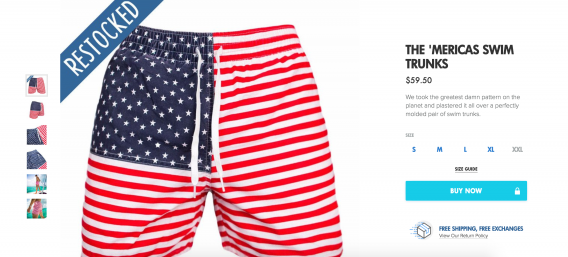
And BustedTees…
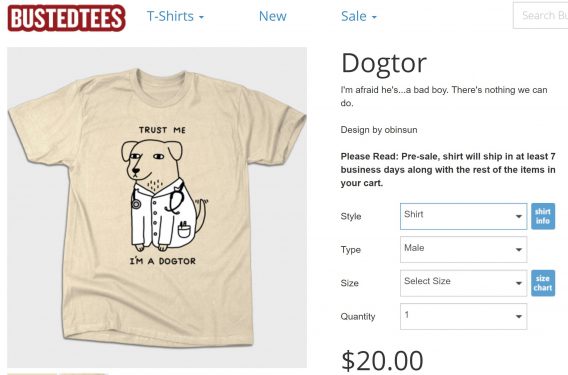
And Manpacks…

Those bits of microcopy slow down the buying process unnecessarily, but slowing down like that allows for the formation of positive memories.
As others have, Andrew emphasizes the importance of finding the balance between ease and friction…

Andrew Grimes, Nationwide Building Society:
“Meta-moments can provide us with space to interpret, understand, and add meaning to our experiences. A little friction in our flow is all we need. A roadblock must be overcome. A speed bump must be negotiated. A diversion must be navigated. Each of these cases involves our attention in a thoughtful way. Our level of engagement deepens. We have an experience we can remember.” (via A List Apart)
4. Create Peaks
Remember the peak-end rule? Peaks are typically driven by emotions. We’ve written an entire article on emotional persuasion, so I encourage you to read that before continuing.
Why is emotion so highly connected to memory? According to Psychologist World…
One theory suggests that our ability to experience distressing emotions, fear and anxiety is an inherited trait which has historically given our ancestors a survival advantage.
So, basically, it used to be essential to our survival that we remember positive and negative emotions very, very well.
In Designing for Emotion, author Aaron Walter talks about Maslow’s famous hierarchy. He uses that same concept to explain the importance of emotion in design…
Simon Schmid of Iubenda explains Aaron’s theory well…

Simon Schmid, Iubenda:
“According to this theory, a product has to be functional, reliable and usable (in that order) before a layer of pleasure can be applied. Emotional design, then, is the pleasurable layer that you put on top of a functional, reliable and usable product.
An effective emotional design strategy has two aspects:
- You create something unique that transcends your own style and that evokes a positive response in users;
- You consistently use that style until it becomes a body of work, a personality layer.” (via Smashing Magazine)
Of course, there are a number of different factors, moods and emotions that you can use. If you read our guide to emotional persuasion, you likely already have a few ideas. Simon lists a few as well…

Simon Schmid, Iubenda:
- “Positivity – See the article ‘What Are the Top 10 Positive Emotions.’
- Surprise – Do something unexpected and new.
- Uniqueness – Differ from other products in an interesting way.
- Attention – Offer incentives, or offer help even if you’re not obliged to.
- Attraction – We all like attractive people, so build an attractive product.
- Anticipation – Leak something ahead of the launch.
- Exclusivity – Offer something exclusive to a select group.
- Be responsive – Show a reaction to your audience, especially when they’re not expecting it.”
If you can deliver positive emotions, you’ll likely be remembered when those emotions are experiences again, according to Psychologist World…
In a joyous mood, we may be able to better remember past events that brought joy to us. For example, whilst on a beach, you may be able to recall happy memories of a memorable family gathering over a negative event. In contrast but following the same principle, whilst in a low mood, you may recall sad memories more easily. This correlation between our mood at the point of recall and the type of memories we able to recall is known as the mood-state dependent memory.
For example, here’s Lianna Patch’s Punchline Copy homepage…
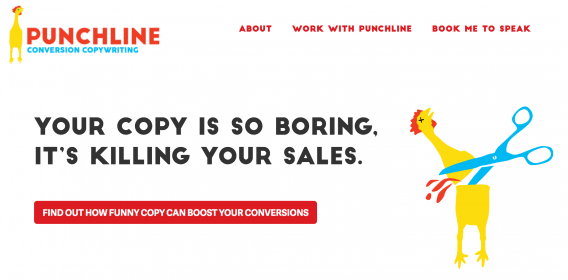
And here’s Kira Hug‘s services page…
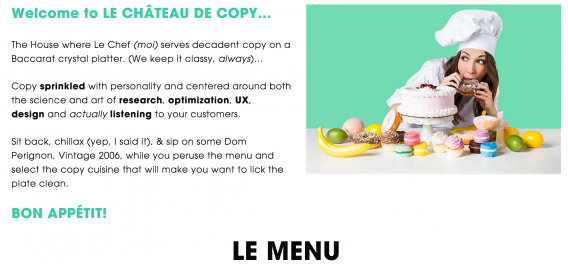
But it’s not just creative copywriters who have the monopoly on emotional design. It can work for mid-market and enterprise, too.
Here’s Basecamp‘s current homepage…
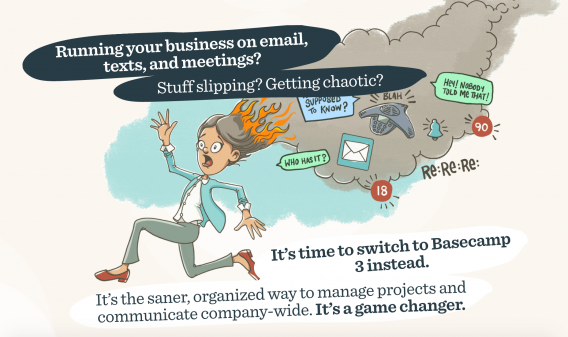
And here’s the 17hats homepage…
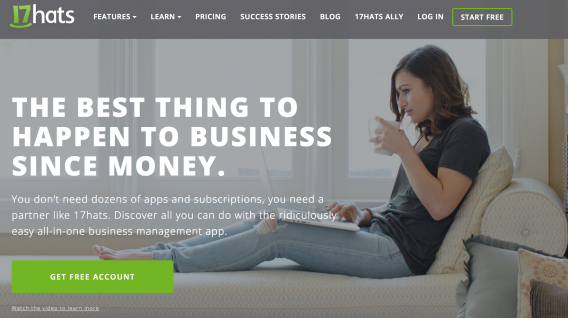
5. Create a Happy Ending
If you do it right, there will be many different endings because people will keep coming back. It’s important that you end on a high note every time.
So, for example…
- Having the option to choose between creating an account or checking out as a guest.
- Seeing related stories, products, reviews, etc. after viewing the current content.
- Being asked to confirm big decisions so that accidents don’t occur.
- Having your work auto saved when your computer battery dies.
Think of all the possible ways a person could exit. Use Google Analytics to help you. Where are people exiting most often? Watch user testing videos to get a clear idea as well.
Then, ask yourself what you can do to create a happier ending on those pages and in those flows.
Note: Even if a customer is terribly unhappy with you, creating a happy ending is crucial. It can change everything, including the story that upset person tells their friends.
Conclusion
Memory management and design is simply key for anyone dealing with online transactions.
Here’s what you’ll need to remember to create a lasting positive memory of your company…
- Tap into the visual, eliminate distractions and ask questions / facilitate action.
- Long-term memory is accessed via associations. Know your audience and to who / to what / how your company is associated.
- Create an experience map to better understand and internally communicate customer interactions.
- Design for the experiencing self and remembering self by finding the right balance of friction and ease.
- Create meta moments to slow people down.
- Create peaks using emotional design.
- Create a happy ending, no matter where the exit point is.


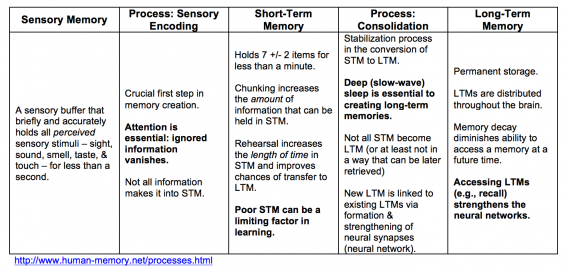
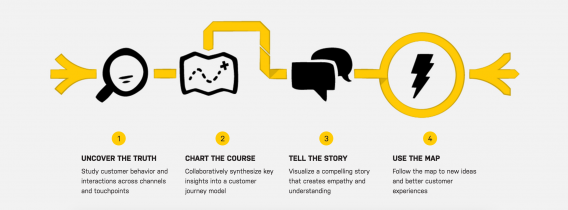

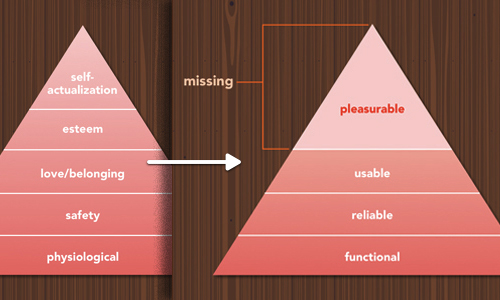



Great post, Shanelle! Thanks for including Le Chef.
Thanks Kira! Happy to.